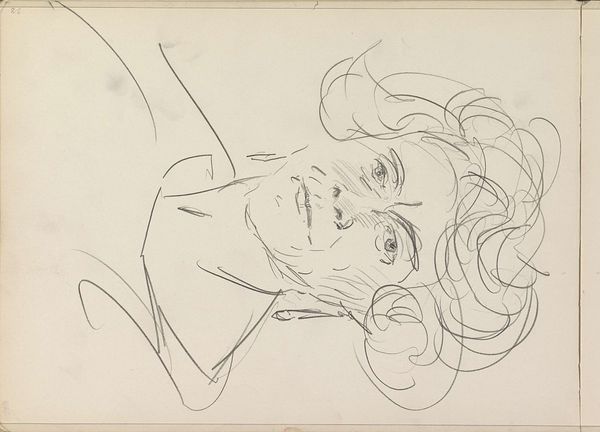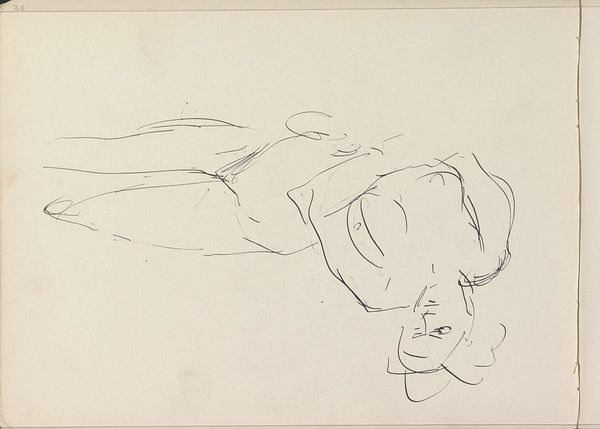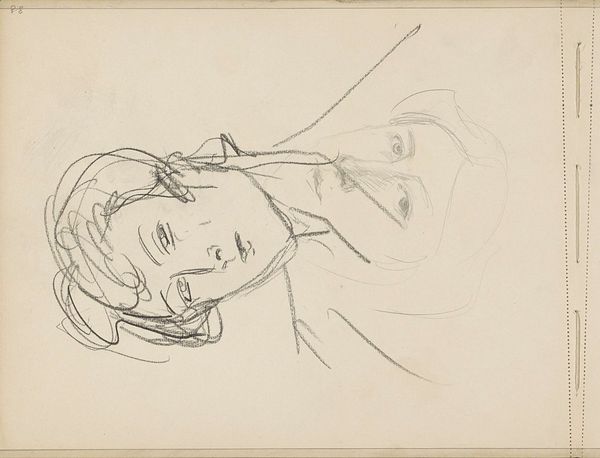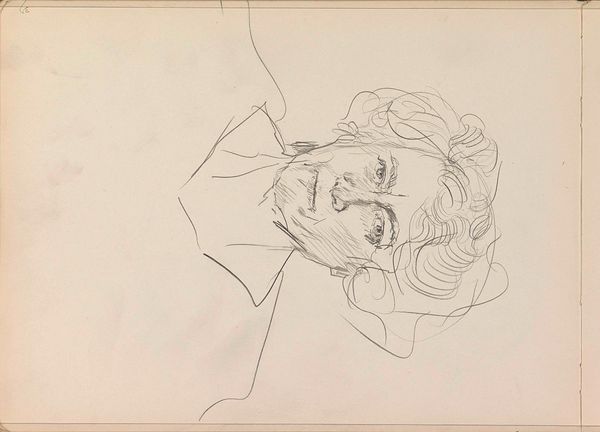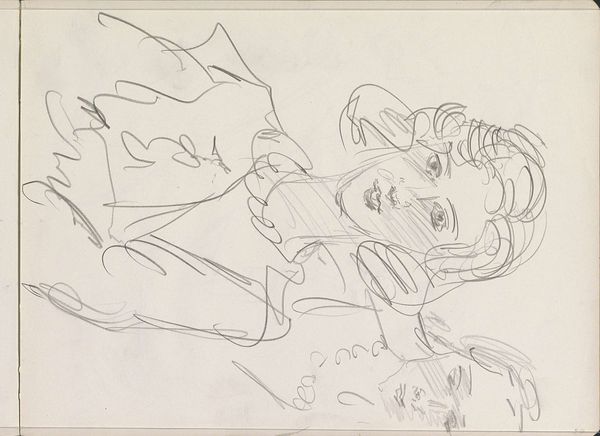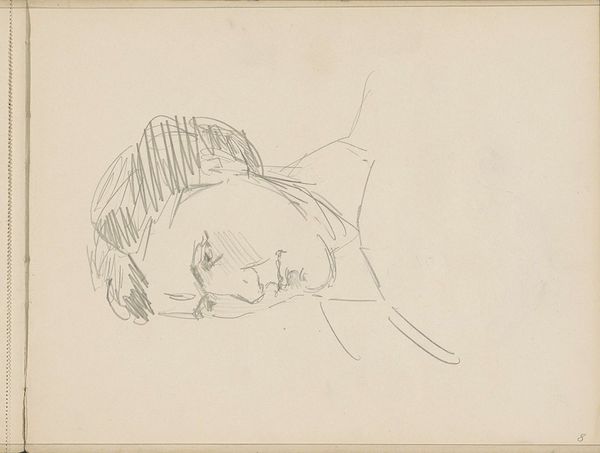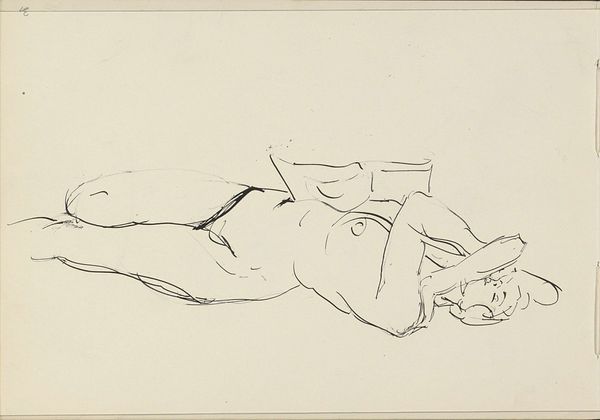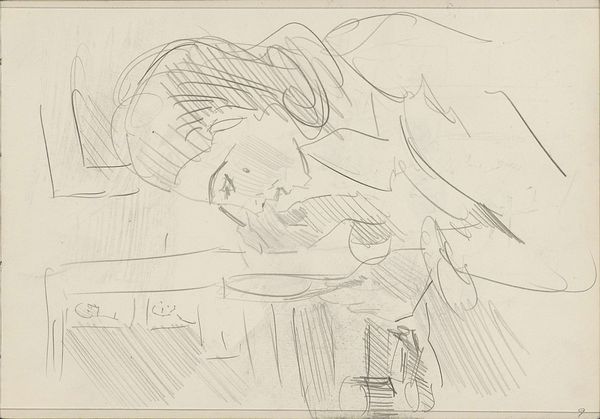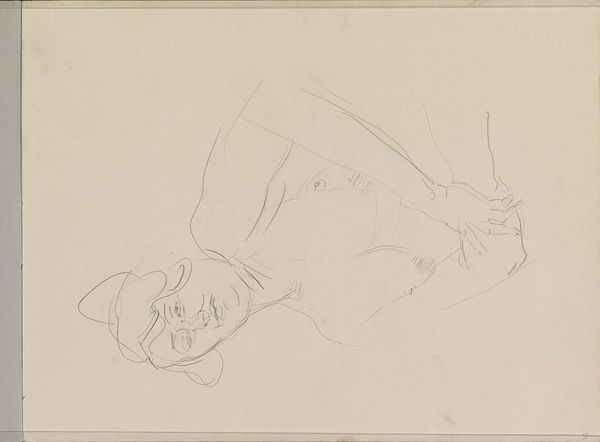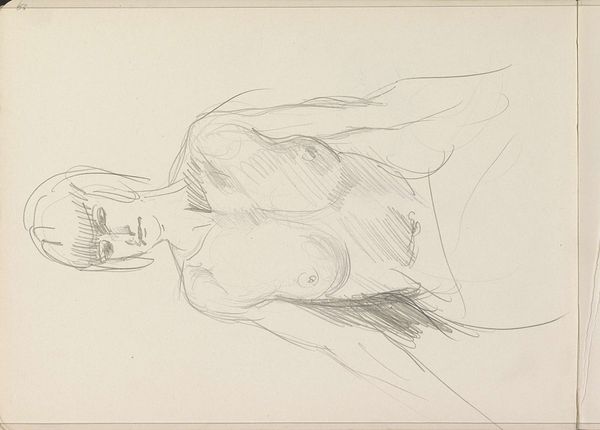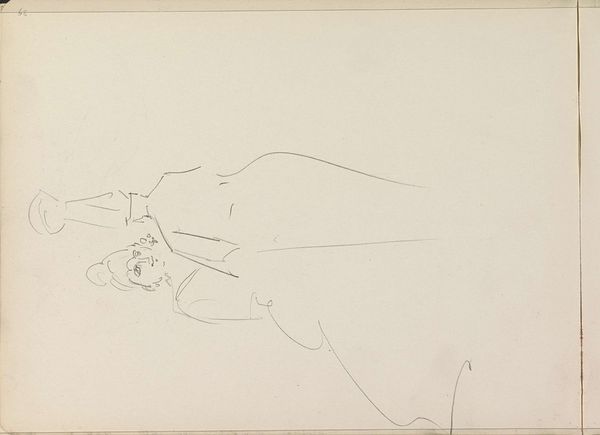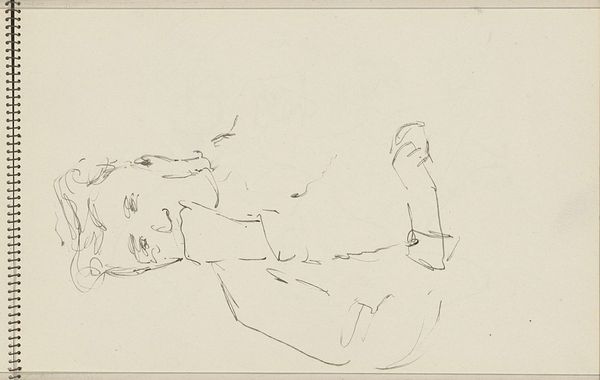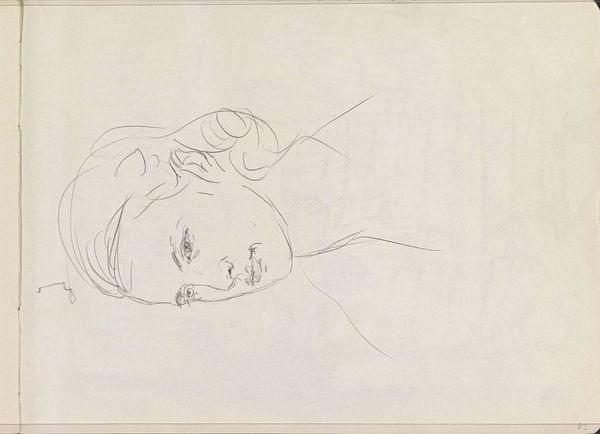
Copyright: Rijks Museum: Open Domain
Editor: Here we have Isaac Israels' "Vrouwenhoofd," or "Head of a Woman," a pencil drawing from the 1915s to 1925s. The loose lines give it a feeling of fleeting movement. What do you make of it? Curator: Isn’t it funny how a few lines can conjure up a whole world? I feel the rush of capturing a momentary pose, like Israels just glimpsed her and had to sketch before the vision faded. The absence of strong lines speaks volumes – almost as if he were painting with the negative space. Does the subject remind you of anyone you might know? Editor: Not really anyone I *know,* but it has that look like portraits of Jazz Age flappers. Curator: Exactly! There is a "go lightly" feeling about this that matches perfectly to its moment in time, even to how the head seems to float there. I wonder what story lies just beyond the edge of the paper? Maybe she's a dancer waiting in the wings, or perhaps she's a lady one might pass in the street, with other places to go? It's less a portrait and more an invitation, don't you think? Editor: Yes, the incompleteness is actually quite inviting. The realism combines with the soft, flowing strokes to give it this lively quality, a sketch but somehow alive. It makes me think differently about the power of suggestion in art. Curator: Indeed. It dances right on that edge, doesn't it? Israels, through that light touch, compels us to complete the picture. The real art might be what *we* bring to it. Editor: Very true. This peek behind the curtain really enriched my appreciation for Israels' style. Thanks.
Comments
No comments
Be the first to comment and join the conversation on the ultimate creative platform.
